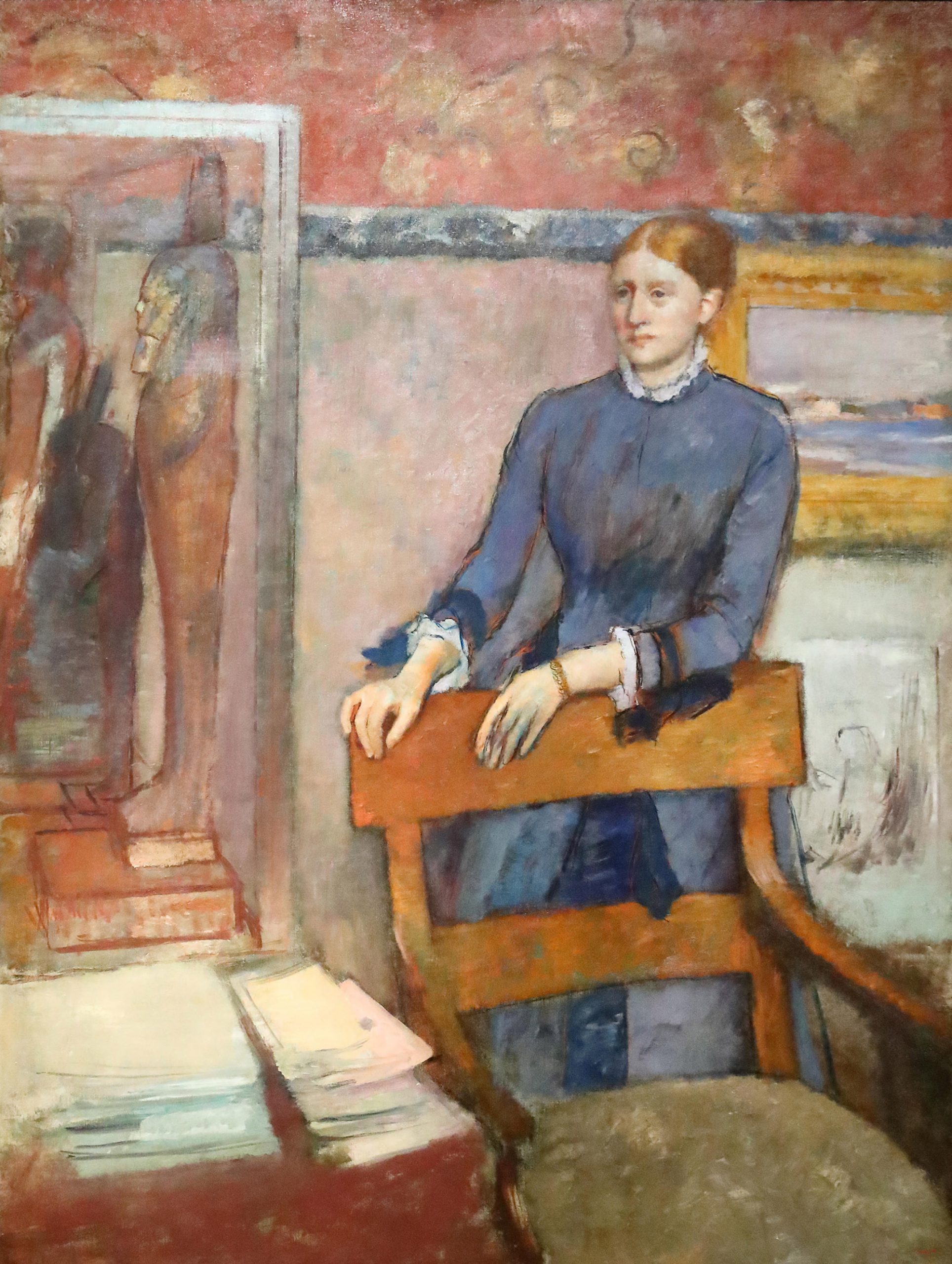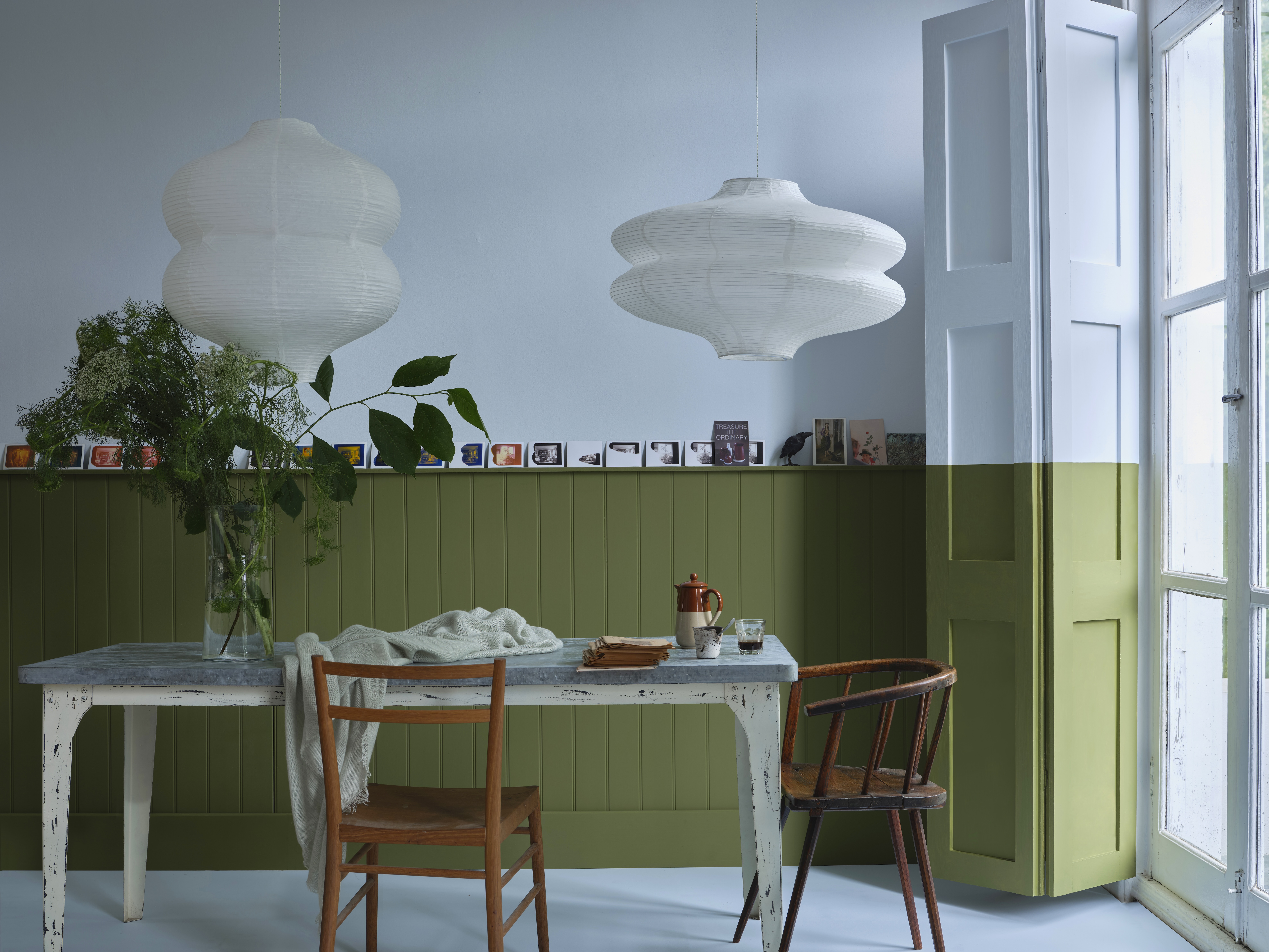My Favourite Painting: Quentin Blake
Quentin Blake chooses his favourite painting for Country Life.


Quentin Blake on Hélène Rouart in her Father’s Study by Edgar Degas
‘Any one of a dozen paintings by Degas could be my favourite, but I choose this one because I retain the vivid memory of it being revealed to me years ago when it was still in private hands. There’s a wonderful sense of balance between the painter and the draughtsman at work; everything impressively but delicately held in check by a sort of formal geometry, and, not uncommon with Degas, the discreet presence of works of art of other periods.
'Whatever his reputation as a misogynist, Degas’ portraits of women must surely be among the most intelligent — the most acknowledging of their individual identity — of the 19th century.’
Quentin Blake is an artist, exhibition curator and illustrator, well known for his collaboration with Roald Dahl.
Art critic John McEwen on the painting and Degas
No surprise that Quentin Blake selects Degas (previously De Gas, the original spelling), who said all he wished for his funeral oration was: ‘He greatly loved drawing.’ Hélène Rouart was a daughter of Degas’ lifelong friend, Henri Rouart. ‘For you there is no commission, no work, no anything that I would not leave for the pleasure of seeing you,’ Degas wrote to him as an old man. They were school friends and Degas served under his command in the Franco-Prussian war.
Rouart was an industrialist with a pioneering interest in refrigeration, but also a collector, a financial backer of the Impressionists and a good enough painter to be included in seven of the group’s original eight shows. This is one of several likenesses of the family, which occupied Degas into the 20th century and form part of his final portrait cycle. He fussed away at this large painting for over a decade. Hélène stands amid her father’s collection — glass-encased Egyptian pieces, a Chinese wall hanging, a Corot landscape and a barely attributable Millet drawing.
That she is minimised by the alpha-male chair, and dutifully positioned, only emphasise that the portrait is almost as much of him as her. Even her arms might be tenderly resting on his shoulder. Nonetheless, she was already engaged — Degas left out the ring — and duly married.
Degas disliked art analysis: ‘Yesterday I dined at the Rouarts. There were his sons and some young people — all talking art. I blew up. What interests me is work, business, the army.’
This article was first published in Country Life, May 27, 2009
Sign up for the Country Life Newsletter
Exquisite houses, the beauty of Nature, and how to get the most from your life, straight to your inbox.
Country Life is unlike any other magazine: the only glossy weekly on the newsstand and the only magazine that has been guest-edited by HRH The King not once, but twice. It is a celebration of modern rural life and all its diverse joys and pleasures — that was first published in Queen Victoria's Diamond Jubilee year. Our eclectic mixture of witty and informative content — from the most up-to-date property news and commentary and a coveted glimpse inside some of the UK's best houses and gardens, to gardening, the arts and interior design, written by experts in their field — still cannot be found in print or online, anywhere else.
-
 Some of the finest landscapes in the North of England with a 12-bedroom home attached
Some of the finest landscapes in the North of England with a 12-bedroom home attachedUpper House in Derbyshire shows why the Kinder landscape was worth fighting for.
By James Fisher
-
 John Sutcliffe — The man, the myth and the paint-naming legend behind Dead Salmon and Elephant's Breath
John Sutcliffe — The man, the myth and the paint-naming legend behind Dead Salmon and Elephant's BreathBy Carla Passino
-
 'As a child I wanted to snuggle up with the dogs and be part of it': Alexia Robinson chooses her favourite painting
'As a child I wanted to snuggle up with the dogs and be part of it': Alexia Robinson chooses her favourite paintingAlexia Robinson, founder of Love British Food, chooses an Edwin Landseer classic.
By Charlotte Mullins
-
 The Pre-Raphaelite painter who swapped 'willowy, nubile women' for stained glass — and created some of the best examples in Britain
The Pre-Raphaelite painter who swapped 'willowy, nubile women' for stained glass — and created some of the best examples in BritainThe painter Edward Burne-Jones turned from paint to glass for much of his career. James Hughes, director of the Victorian Society, chooses a glass masterpiece by Burne-Jones as his favourite 'painting'.
By Charlotte Mullins
-
 'I can’t look away. I’m captivated': The painter who takes years over each portrait, with the only guarantee being that it won't look like the subject
'I can’t look away. I’m captivated': The painter who takes years over each portrait, with the only guarantee being that it won't look like the subjectFor Country Life's My Favourite Painting slot, the writer Emily Howes chooses a work by a daring and challenging artist: Frank Auerbach.
By Toby Keel
-
 My Favourite Painting: Rob Houchen
My Favourite Painting: Rob HouchenThe actor Rob Houchen chooses a bold and challenging Egon Schiele work.
By Charlotte Mullins
-
 My Favourite Painting: Jeremy Clarkson
My Favourite Painting: Jeremy Clarkson'That's why this is my favourite painting. Because it invites you to imagine'
By Charlotte Mullins
-
 The chair of the National Gallery names his favourite from among the 2,300 masterpieces — and it will come as a bit of a shock
The chair of the National Gallery names his favourite from among the 2,300 masterpieces — and it will come as a bit of a shockAs the National Gallery turns 200, the chair of its board of trustees, John Booth, chooses his favourite painting.
By Toby Keel
-
 'A wonderful reminder of what the countryside could and should be': The 200-year-old watercolour of a world fast disappearing
'A wonderful reminder of what the countryside could and should be': The 200-year-old watercolour of a world fast disappearingChristopher Price of the Rare Breed Survival Trust on the bucolic beauty of The Magic Apple Tree by Samuel Palmer, which he nominates as his favourite painting.
By Charlotte Mullins
-
 My favourite painting: Andrew Graham-Dixon
My favourite painting: Andrew Graham-Dixon'Lesson Number One: it’s the pictures that baffle and tantalise you that stay in the mind forever .'
By Country Life